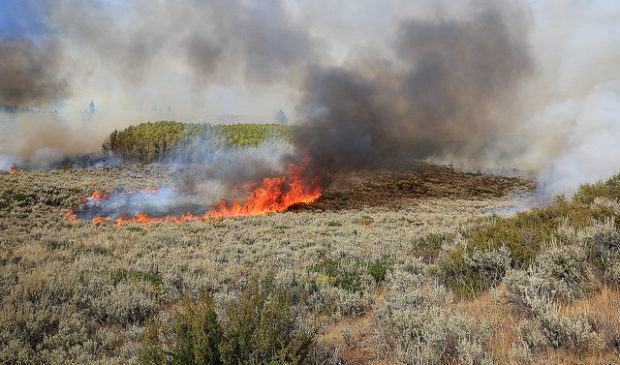‘Mega-fires’ are real, but their size is anyone’s guess
Wednesday, November 14, 2018 by
Jessi Devenyns When representatives from the Austin Fire Department spoke at the last meeting of the Public Safety Commission, they alluded to a “mega-fire” they said was imminent in West Austin.
Although the term may sound alarming, Justice Jones, wildfire mitigation program manager in the department’s Wildfire Division, told the Austin Monitor that there is no true definition of what a mega-fire is. “‘Mega-fire’ is jargon in the wildfire community to communicate the increase in major fire intensity that we’re seeing all across the country,” he said.
Jones compared the definition of a mega-fire to the mega-storms like Hurricane Harvey and Hurricane Florence that the country has recently endured. An even more graphic example is the current California Camp Fire.
Although the Fire Department anticipates a mega-fire in West Austin, that’s not the only part of the city at risk. According to Jones, all of Austin is susceptible to large wildfires. What makes the west side of town exceptional is that a fire is less likely to occur there than in East Austin – where the vegetation is prime for grass fires – but if it does, it will be more intense and more difficult to suppress.
Wildfires, Jones explained, are affected by three things: fuel, topography – “because fire can spread more quickly uphill” – and climate. Due to the terrain and vegetation in West Austin, Jones said it is an “intuitive assessment” that the highest-intensity, lowest-frequency fires will occur there.
The good news is that the department is already preparing to combat these future fires. Through education about “house hardening,” or fireproofing, and a community “Get Firewise” program, Jones explained that the chance of fires raging out of control is reduced. Plus, “In Austin we have a very robust firefighting force,” he assured the Monitor.
Although wildfires are nothing new in Central Texas, awareness around them has increased in priority. Due to climate change, Jones said, “there isn’t a fire season anymore, it’s year-round.” On top of that, with the continued influx of residents into the city, there is an increased chance of wildfires igniting. “I would say the number of brush fires has increased because the number of people in Austin has increased, and being that 90 percent of fires are caused by individuals, this population increase is leading to a higher probability of fires to start.”
Couple that with the thousands of acres of wildland that the city of Austin protects, and there is the perfect set of conditions to spark a fire. Jones, however, is confident that continuing education and awareness about wildfires will help reduce their overall frequency in the city.
Photo by Austin Catlin, BLM, from Flickr, made available by a Creative Commons license.
The Austin Monitor’s work is made possible by donations from the community. Though our reporting covers donors from time to time, we are careful to keep business and editorial efforts separate while maintaining transparency. A complete list of donors is available here, and our code of ethics is explained here.
You're a community leader
And we’re honored you look to us for serious, in-depth news. You know a strong community needs local and dedicated watchdog reporting. We’re here for you and that won’t change. Now will you take the powerful next step and support our nonprofit news organization?



